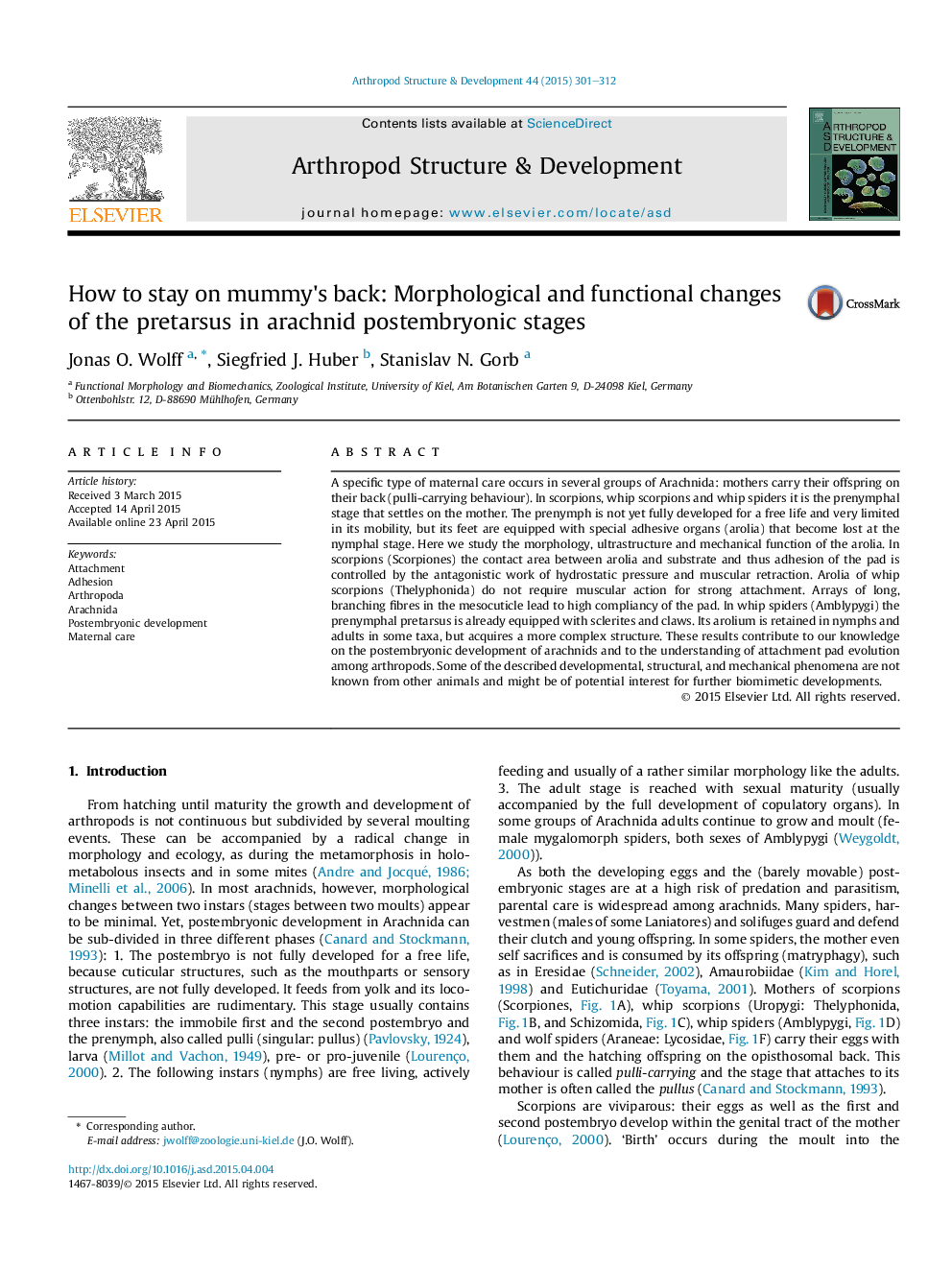| کد مقاله | کد نشریه | سال انتشار | مقاله انگلیسی | نسخه تمام متن |
|---|---|---|---|---|
| 5888688 | 1153139 | 2015 | 12 صفحه PDF | دانلود رایگان |
- Some arachnids show a radical transformation of the leg tip between two instars.
- In the prenymph smooth adhesive pads (arolia) help it to cling to its mother.
- Arrays of branching fibers permit high compliancy at high stability in the arolia.
- Aroliar secretions contribute to adhesion by capillary and viscous forces.
- The scorpion arolium is inflated by hydrostatic pressure and retracted by muscles.
A specific type of maternal care occurs in several groups of Arachnida: mothers carry their offspring on their back (pulli-carrying behaviour). In scorpions, whip scorpions and whip spiders it is the prenymphal stage that settles on the mother. The prenymph is not yet fully developed for a free life and very limited in its mobility, but its feet are equipped with special adhesive organs (arolia) that become lost at the nymphal stage. Here we study the morphology, ultrastructure and mechanical function of the arolia. In scorpions (Scorpiones) the contact area between arolia and substrate and thus adhesion of the pad is controlled by the antagonistic work of hydrostatic pressure and muscular retraction. Arolia of whip scorpions (Thelyphonida) do not require muscular action for strong attachment. Arrays of long, branching fibres in the mesocuticle lead to high compliancy of the pad. In whip spiders (Amblypygi) the prenymphal pretarsus is already equipped with sclerites and claws. Its arolium is retained in nymphs and adults in some taxa, but acquires a more complex structure. These results contribute to our knowledge on the postembryonic development of arachnids and to the understanding of attachment pad evolution among arthropods. Some of the described developmental, structural, and mechanical phenomena are not known from other animals and might be of potential interest for further biomimetic developments.
Journal: Arthropod Structure & Development - Volume 44, Issue 4, July 2015, Pages 301-312
